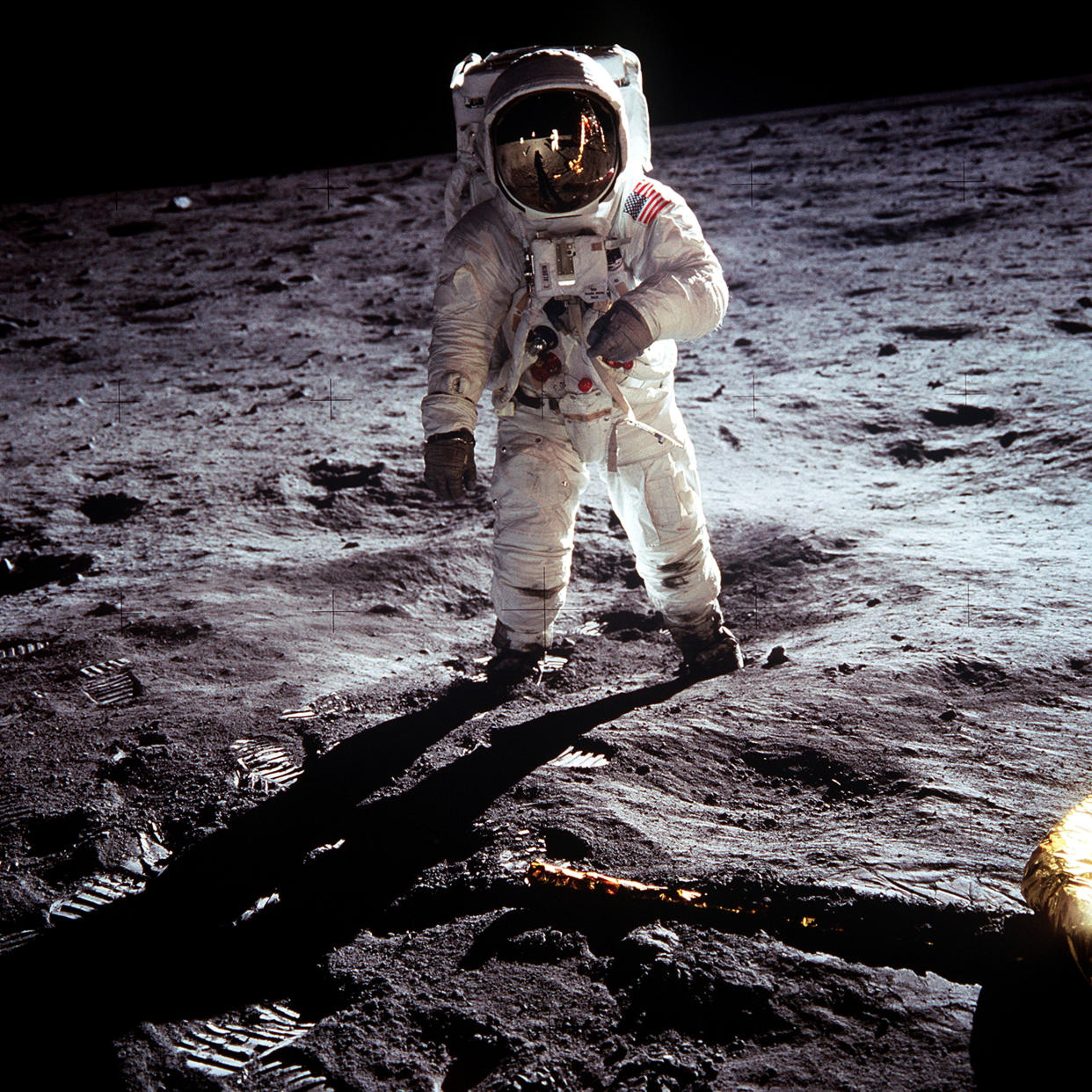Why do people believe the moon landings were faked (and how do we know they weren’t?)

Millions of people firmly believe that the moon landings were faked, with a 1999 Gallup poll suggeting that 6% of Americans believe Apollo 11 was a hoax.
A further 5% were undecided.
YouTube recently cracked down on conspiracy theory content, but there are still dozens of deadly serious videos arguing that the moon landings never happened.
On the 50th anniversary, TV stations and newspapers are filled with video and imagery of the landings - so how can conspiracy theorists argue it’s all faked?
Conspiracy fans claim that the landings simply wouldn’t have been possible with 60s technology, or that details in the images ‘prove’ that the landings didn’t happen.
There’s also a bizarrely specific rumour that Stanley Kubrick directed the whole thing.
So why do so many people believe that the landings were faked - and how do we know they’re wrong?
Where did the idea come from?

A self-published 1976 book by ‘rocket expert’ Bill Kaysing, ‘We Never Went to the Moon: America's Thirty Billion Dollar Swindle’ lit the match under the moon hoax conspiracy.
Many of the supposed ‘giveaways’ still touted by moon truthers today come from Kaysing’s book.
Kaysing, a former US Navy Officer had worked as a technical writer for Rocketdyne until 1963.
Read more
US Military issues warning to people planning to ‘Storm Area 51’
NASA expert says tiny aliens ‘may already have visited Earth’
Five places aliens might be hiding in our solar system
Kaysing claimed - with little evidence - that NASA only had a ‘0.0017%’ chance of completing the mission for real, and thus resolved to fake it.
Author C Stuart Hardwick has debunked moon hoaxes repeatedly on Quora, saying, ‘The first person to give real voice to moon hoax conspira-nonsense was Bill Kaysing, a technical writer who had worked for Rocketdyne until 1963.
‘Why? It’s unclear. He was not obviously insane, but he was obviously unqualified to express the opinions he was expressing. My guess is, technical writing with objective criteria didn’t suit him, and pretending expertise to a bunch of ignorant sycophants fuelled his ego.
Kaysing misused his ‘expertise’ as a technical writer to create the impression the missions were faked, Hardwick says, ignoring any facts that got in the way.
‘No stars’

In a newspaper interview in 1977, Kaysing said, ‘There are no stars in any of their pictures. If they were taken on the moon there would have been some stars in evidence.’
Obsessing over the images taken on the moon has become a favourite pastime of moon ‘truthers’ in the years since - and people still raise the ‘no stars’ argument’.
But Kaysing’s complaint makes little sense.
Still photography from the Apollo 11 moonwalk was captured on cameras specially built by the Swiss company Hasselblad to mount on an astronaut's chest.
The cameras used by the NASA astronauts were built to capture images on the lunar surface - so the aperture was adjusted for the blazing sunlight of the moon.
Cameras with those settings are not going to capture the small amount of light from distant stars.
Did Stanley Kubrick film the landings?
Haysing also started the rumour that Stanley Kubrick was involved in the hoax, claiming that the director’s research for the film 2001 was in fact a ‘cover’ for his real work for NASA.
There is no evidence of this - and the effects in the film 2001, filmed in 1968, offer concrete evidence of why it would be extremely difficult to fake the landings using 1969 technology.
After Kubrick’s death, a video circulated with ‘Stanley Kubrick’ saying, ‘I perpetrated a huge fraud on the American public, which I am now about to detail, involving the United States government and NASA, that the moon landings were faked, that the moon landings ALL were faked , and that I was the person who filmed it.’
But the video was rapidly debunked, with Kubrick’s widow pointint out that the ‘Kubrick’ in the video was a fake.
How do we know the landings were real?

Earlier this year, NASA astronaut Doug Hubley said that it would have been harder to fake the landings than to actually do them.
More than 400,000 people were involved in the Apollo project, so maintaining a complete veil of secrecy would have been impossible.
Hubley said, ‘I've always maintained that it would've been harder to fake it and hide it. It just takes one person to go spill.’
Then, of course, there are all the moon rocks.
Not only has NASA analysed pounds and pounds of moon rocks, it’s still analysing samples which were ‘held back’.
One sample being opened this year was collected by the Apollo 17 mission.
Lori Glaze, acting director of NASA's Planetary Science Division in Washington, DC said, ‘These samples were deliberately saved so we can take advantage of today's more advanced and sophisticated technology to answer questions we didn't know we needed to ask.’
There’s also the fact that human artifacts on the moon are clearly visible in satellite footage captured by NASA’s Lunar Reconnaissance Orbiter.
That includes footprints, spacecraft, and American flags.
These sightings have been confirmed by other spacecraft from countries such as China, India and Japan.


